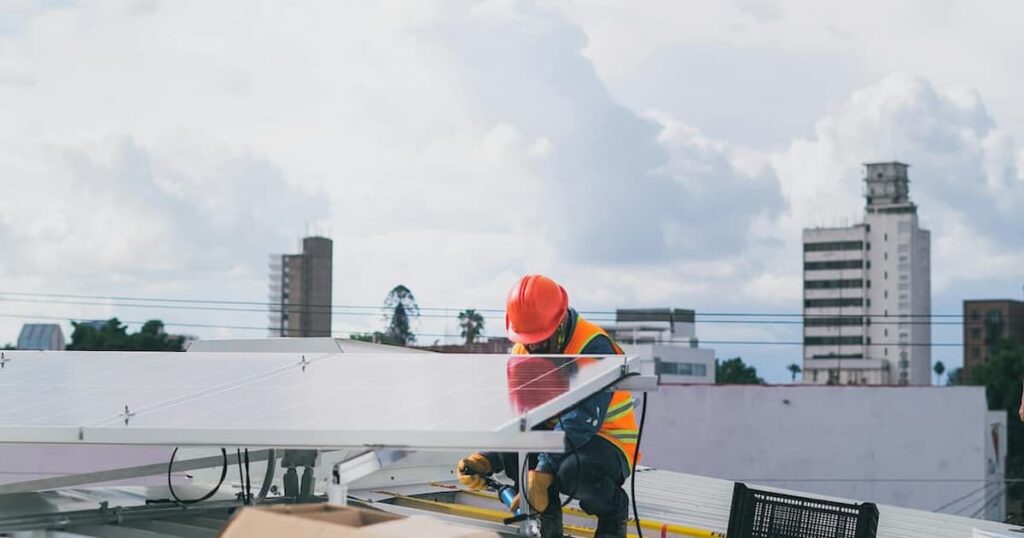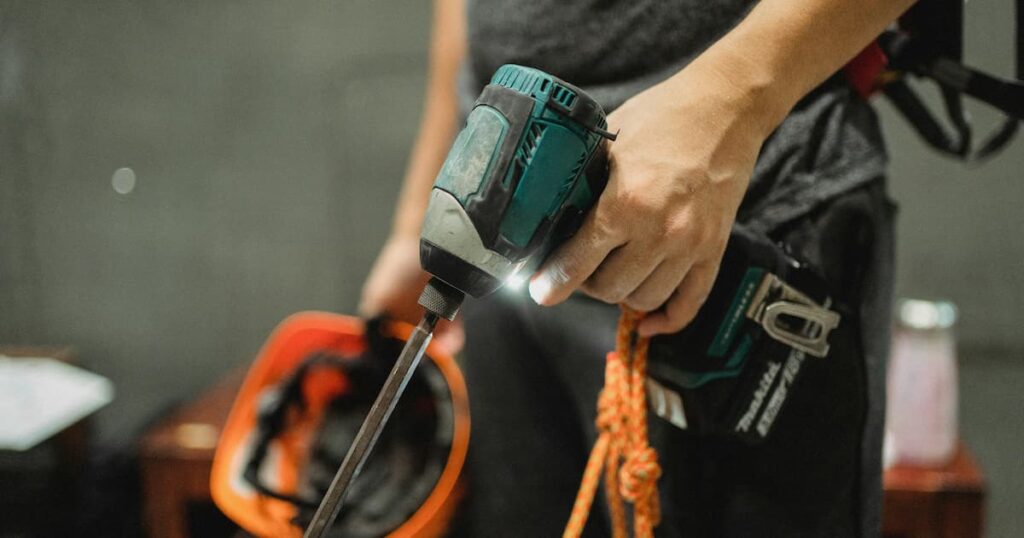
No Falls Week is a crucial initiative aimed at raising awareness about the importance of safety measures when working at heights. When working at a height, tethering your tools is an essential practice that can drastically lower incidents and accidents. Securing your tools will shield you from potential harm and injuries from falling objects, as well as protect you and your colleagues. This straightforward but powerful action is essential for encouraging a safer workplace when performing tasks at a higher elevation.
As an object falls toward the ground it accelerates exponentially. As it accelerates it picks up force which is transferred to any object it strikes on impact. It is this force which can be deadly to those standing below a dropped object. For instance, the average screwdriver dropped from a height of just 14m is equivalent to dropping it from a four-storey building when considering the principle of physics. By factoring in the original mass of the screwdriver along with the acceleration, you can calculate that the screwdriver will hit the ground at an impact weight of approximately 74kg. That kind of weight, when moving at a sufficient speed, has the potential to cause fatality, even if the individual is wearing a hard hat.

Identifying site-specific risks can pose a challenge for inspectors and workers due to the multitude of unforeseen risks. To overcome this, it is beneficial to have multiple individuals independently assess the job site. While there will be common risks identified by all inspectors, each individual will inevitably uncover additional risks that others may have missed.
Furthermore, it is crucial not to underestimate any unlikely risks that have been identified, even if they were overlooked by others. Experience in hazardous work environments has taught us that nothing is impossible. Some of the most severe accidents occur unexpectedly, without any prior anticipation or planning. Therefore, it is essential to consider all identified risks and develop appropriate mitigation plans. Additionally, it is important to continuously update procedures and controls as new risks are identified.
During the process of conducting inspections on dropped tools, operatives have the responsibility to ensure their awareness and understanding of the potential hazards, while also implementing appropriate safety measures such as tethering. It is crucial to consider various safety controls such as elevation systems, tool tethering systems, weather conditions, and other environmental factors.
According to the Work at Height Regulations 2005, it is mandatory to ensure that all tasks performed at height need to be carried out with the utmost safety. In certain cases, it may be advisable for certain tasks to be completely more safely in a different location or at ground level, where additional safety measures such as safety nets, covered walkways, or tool tethers can be employed to safeguard both workers and tools.
In addition to safety concerns, tool tethering serves as a practical way to safeguard your tools from potential damage. Dropped tools are likely to need replacing. On a large site, with a large inventory of tools, implementing tool tethering can help preserve financial investment for these valuable assets.

There are several methods available to securely tether your tools. One option is to use tool lanyards, which involve attaching a lanyard to your tool and then securing the other end to a fixed anchor point, belt, or harness. Another option is to use retractable tool tethers, which allow you to extend the reach of your tools while keeping them securely tethered to you.
Tool belts and pouches with built-in tethering features are also available, providing a convenient way to secure your tools in place. Additionally, you can use tool tethers and Karabiners by attaching a tool tether to your tool and connecting it to your belt or harness using a karabiner.
You can also keep your tools safe in a tool bucket or tool bag with a tether attached to prevent them from falling. Whichever method you choose, it is important to ensure that it is secure and appropriate for the weight and size of the tool you are tethering.
Leading Edge offer a wide range of tool tethering solutions. You can also master the process of selecting and applying cutting-edge tool tethering solutions to your existing tool for safe work at height with our Tool Tethering competent person course. Contact us for more information.
Copyright 2025 Leading Edge Safety. Devloped by Czargroup Technologies